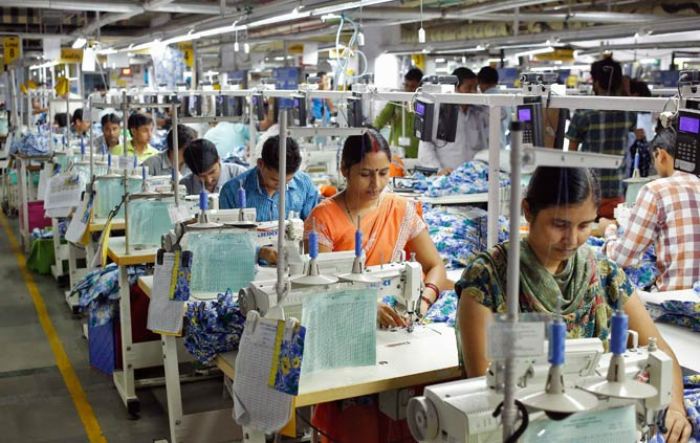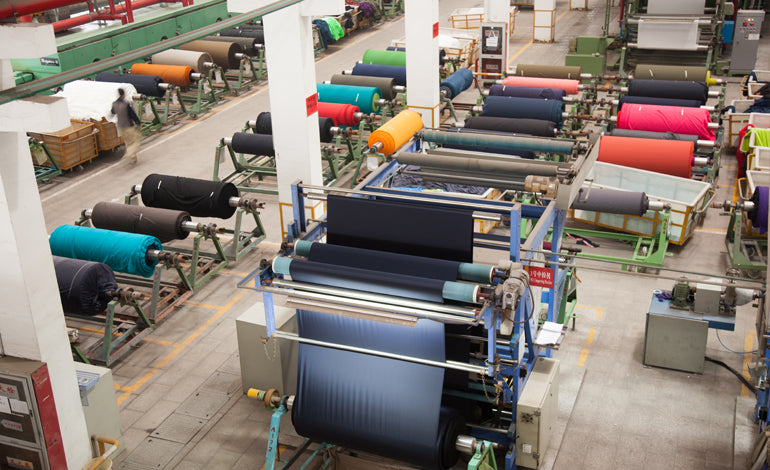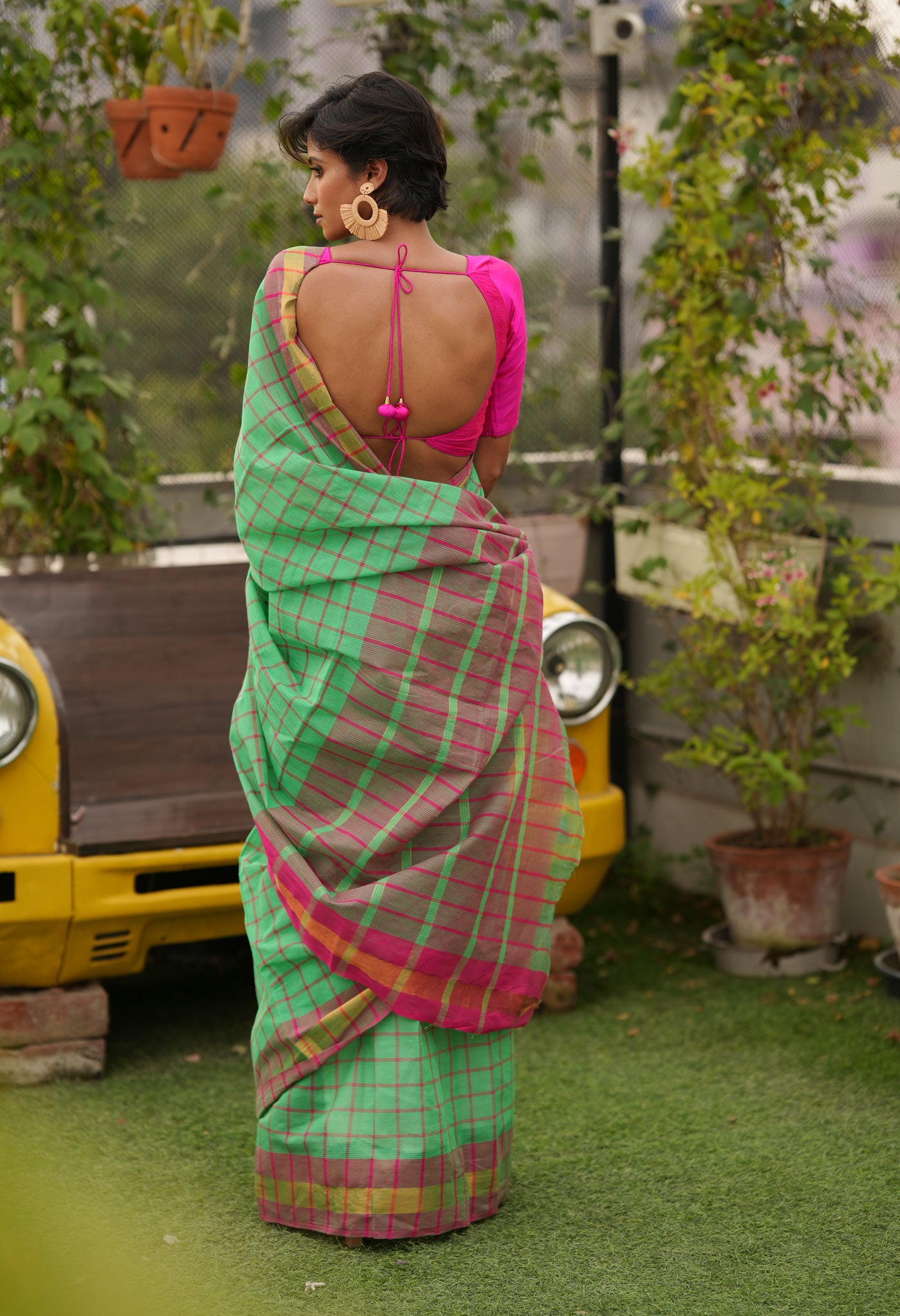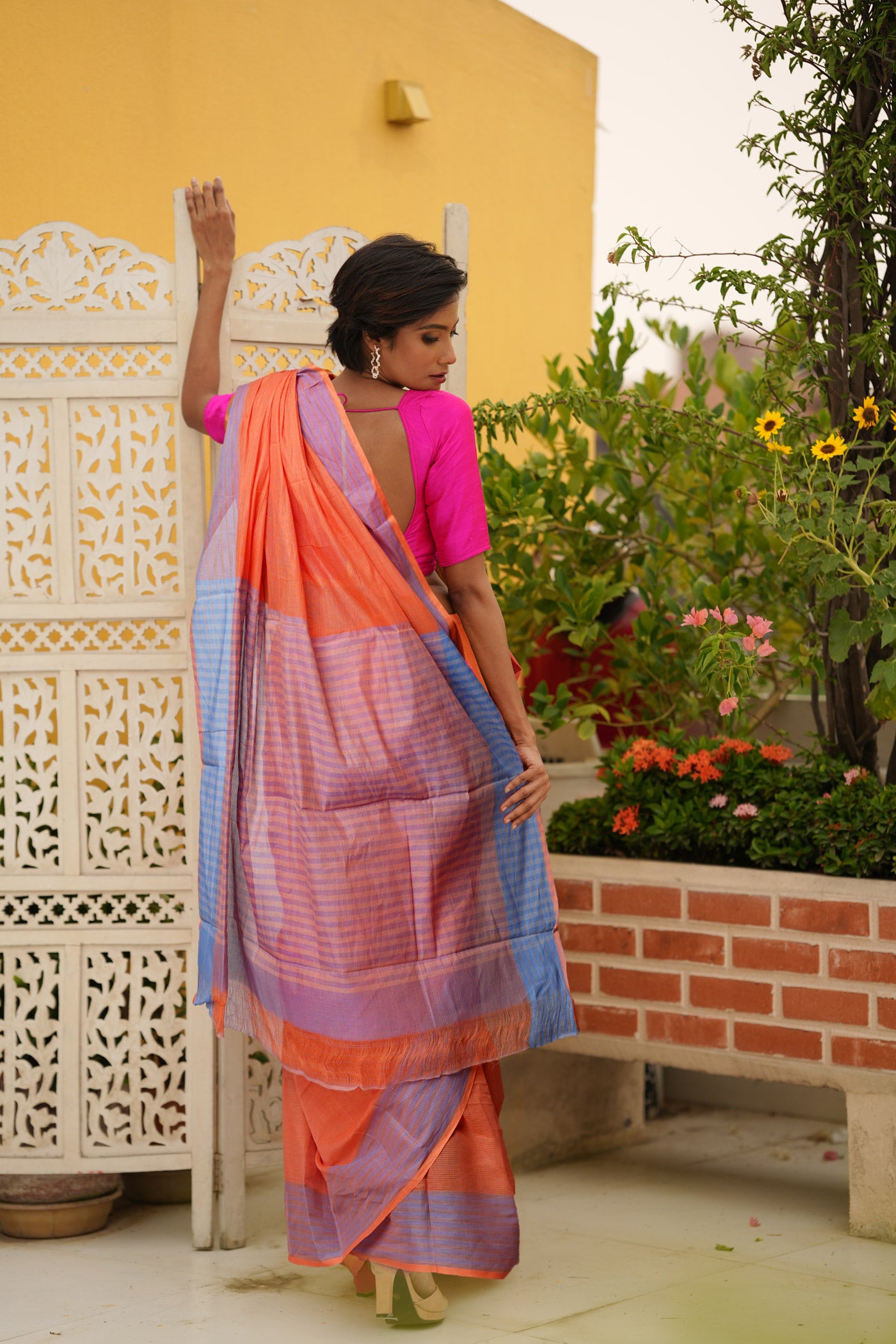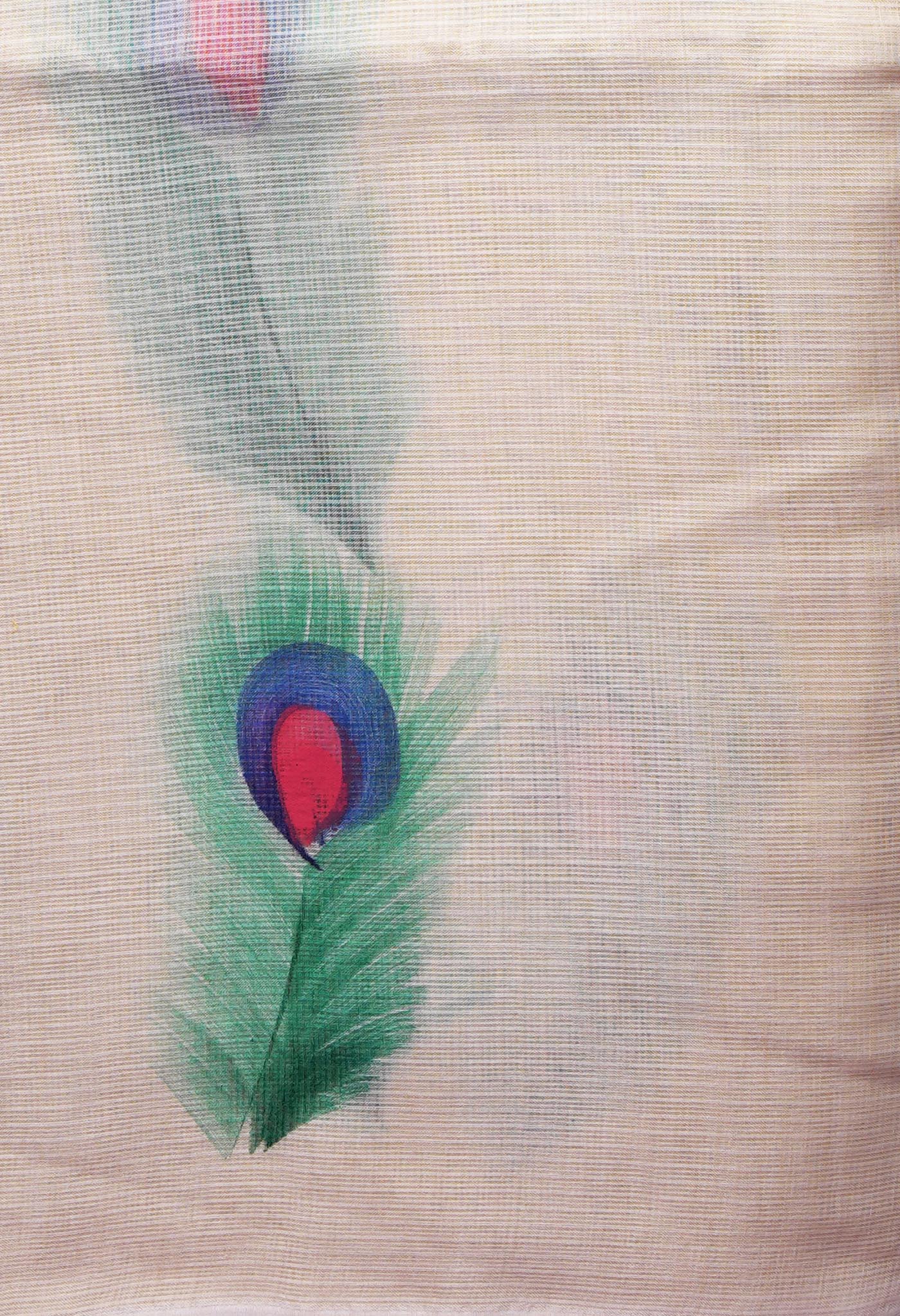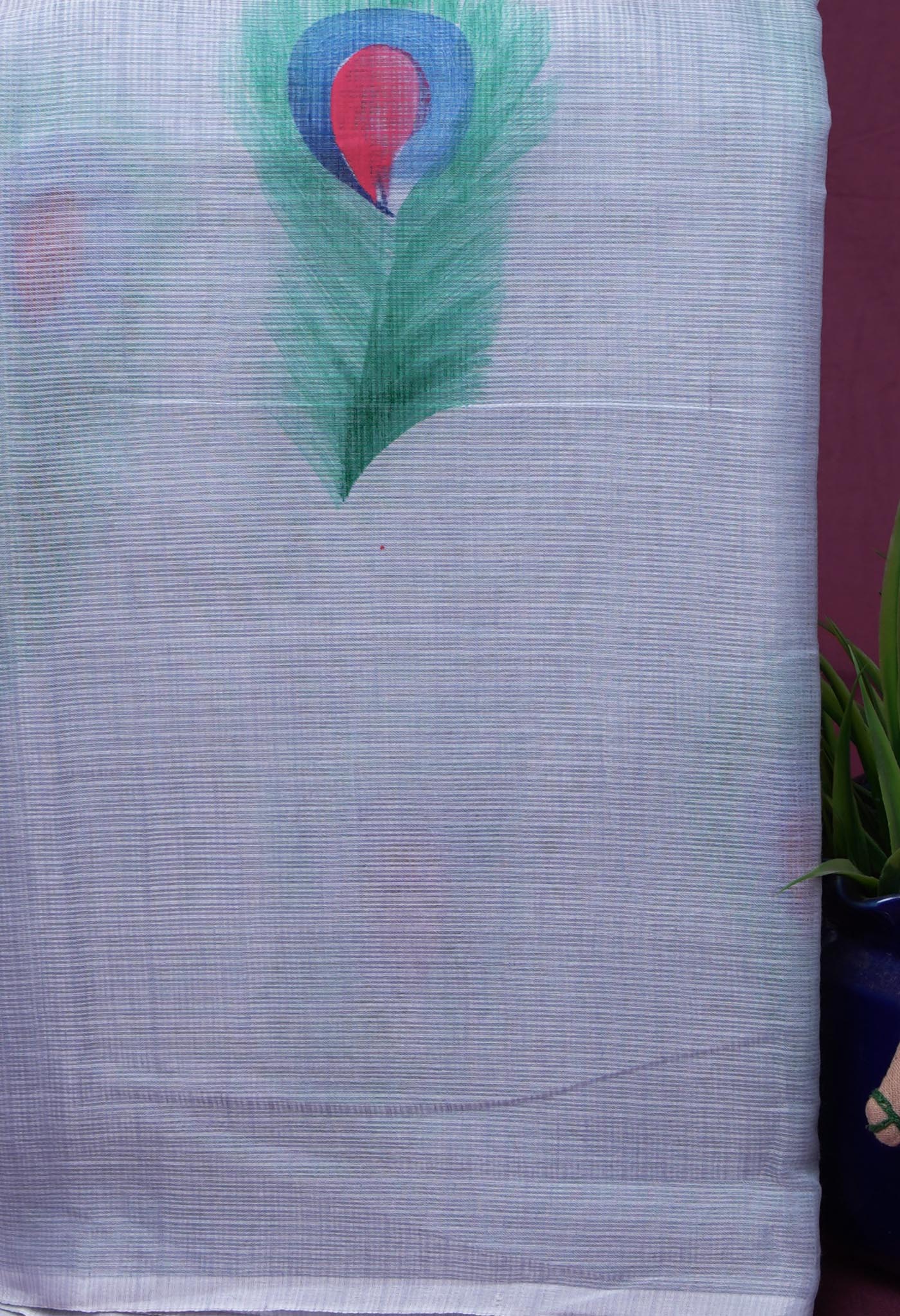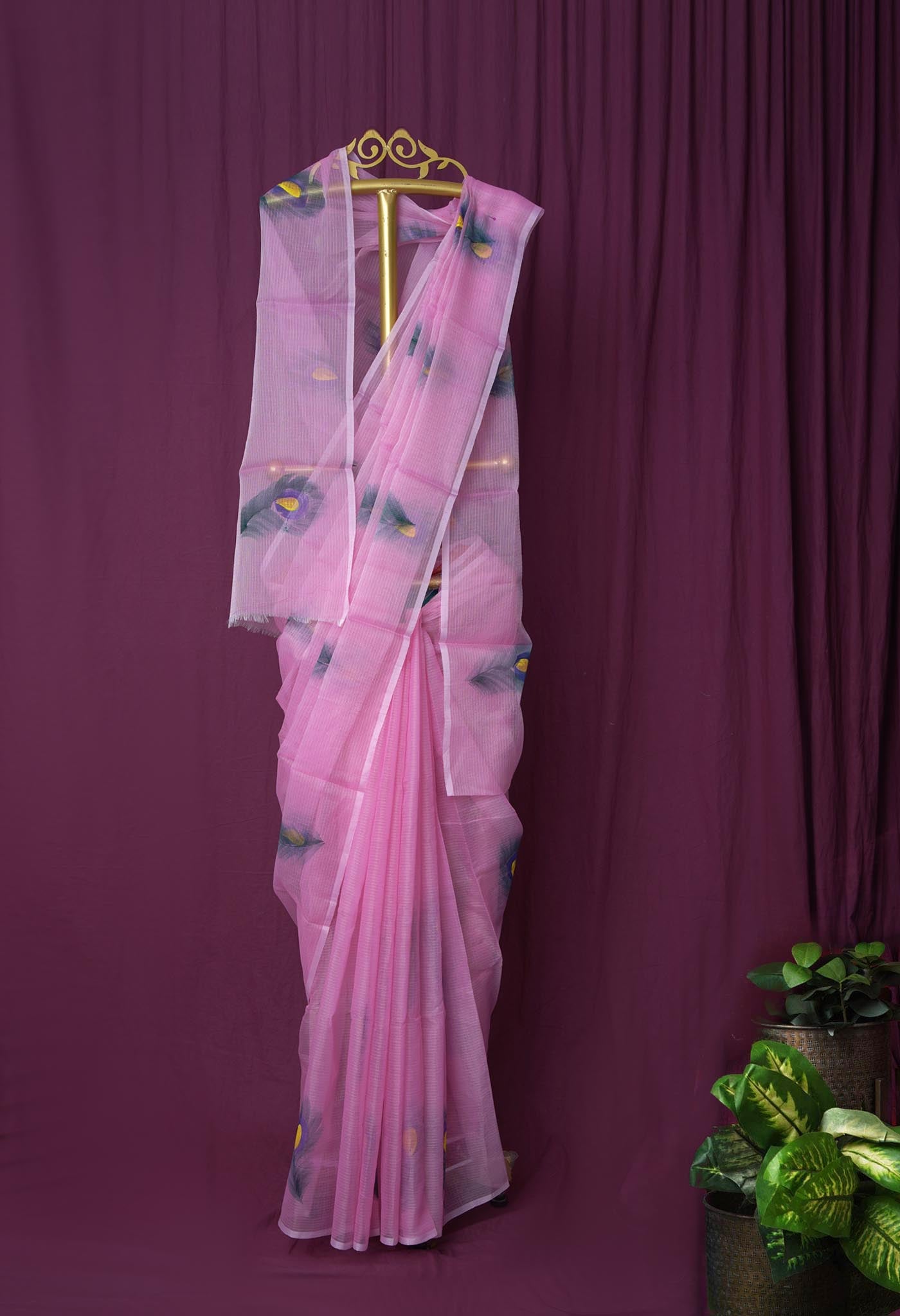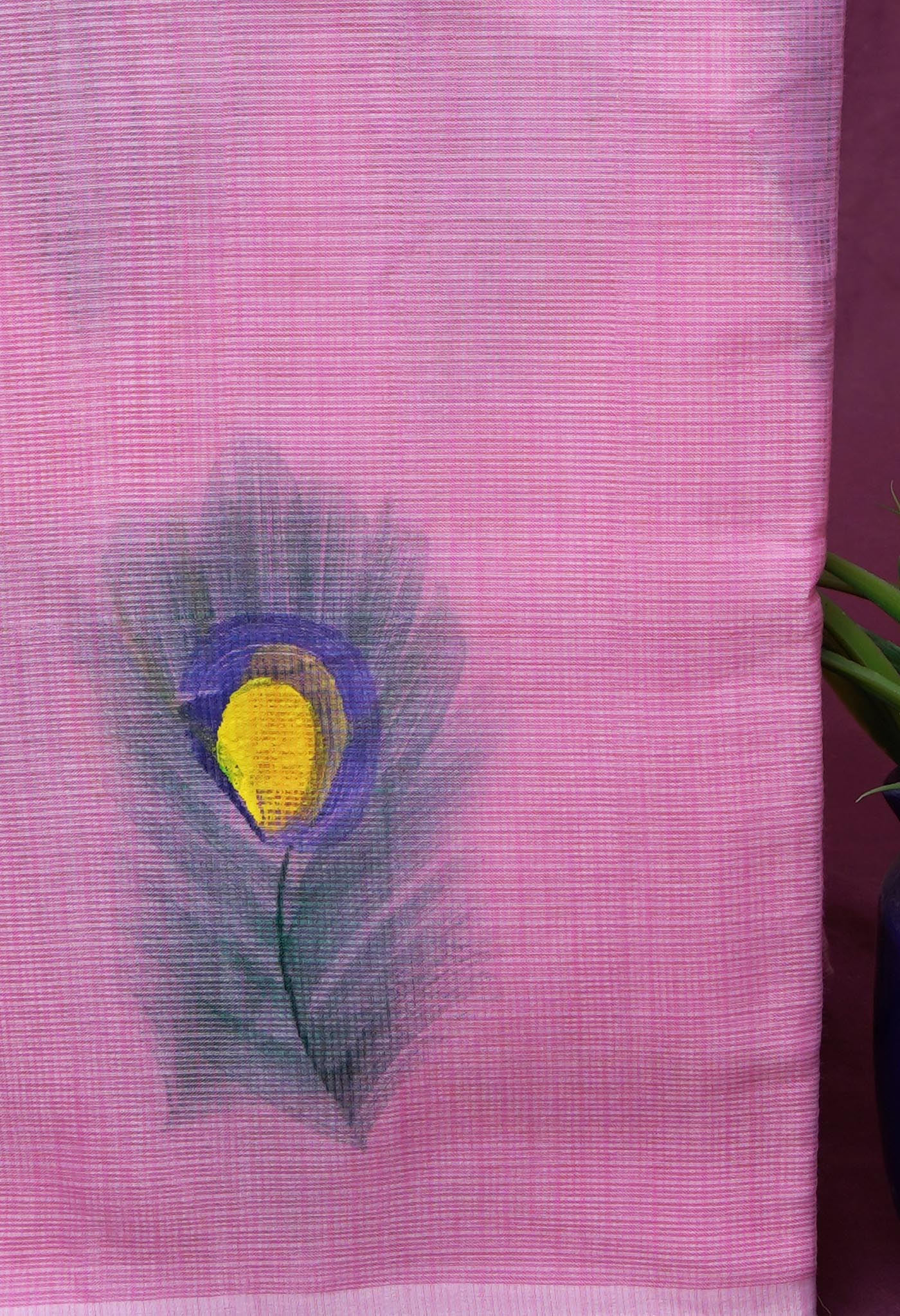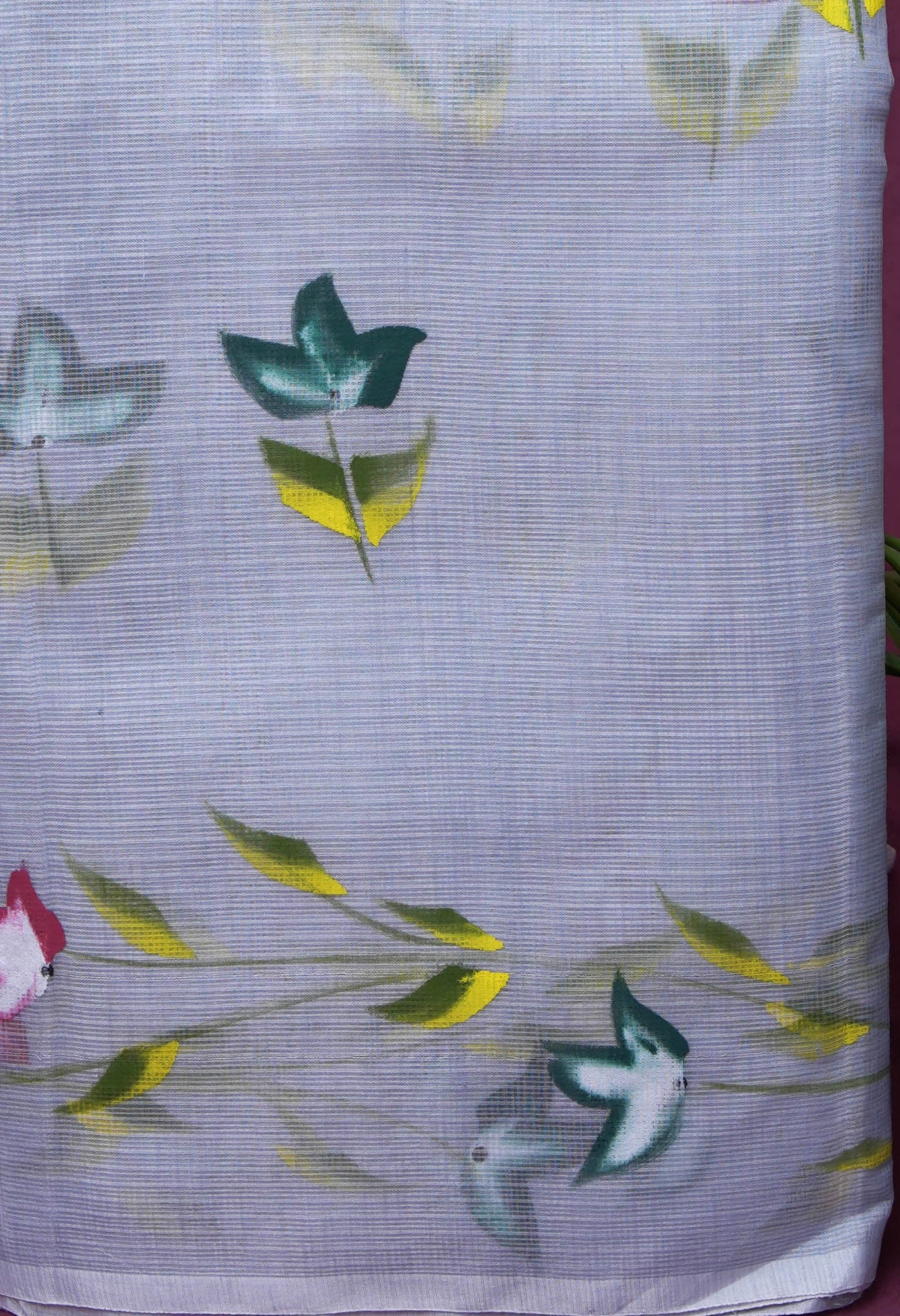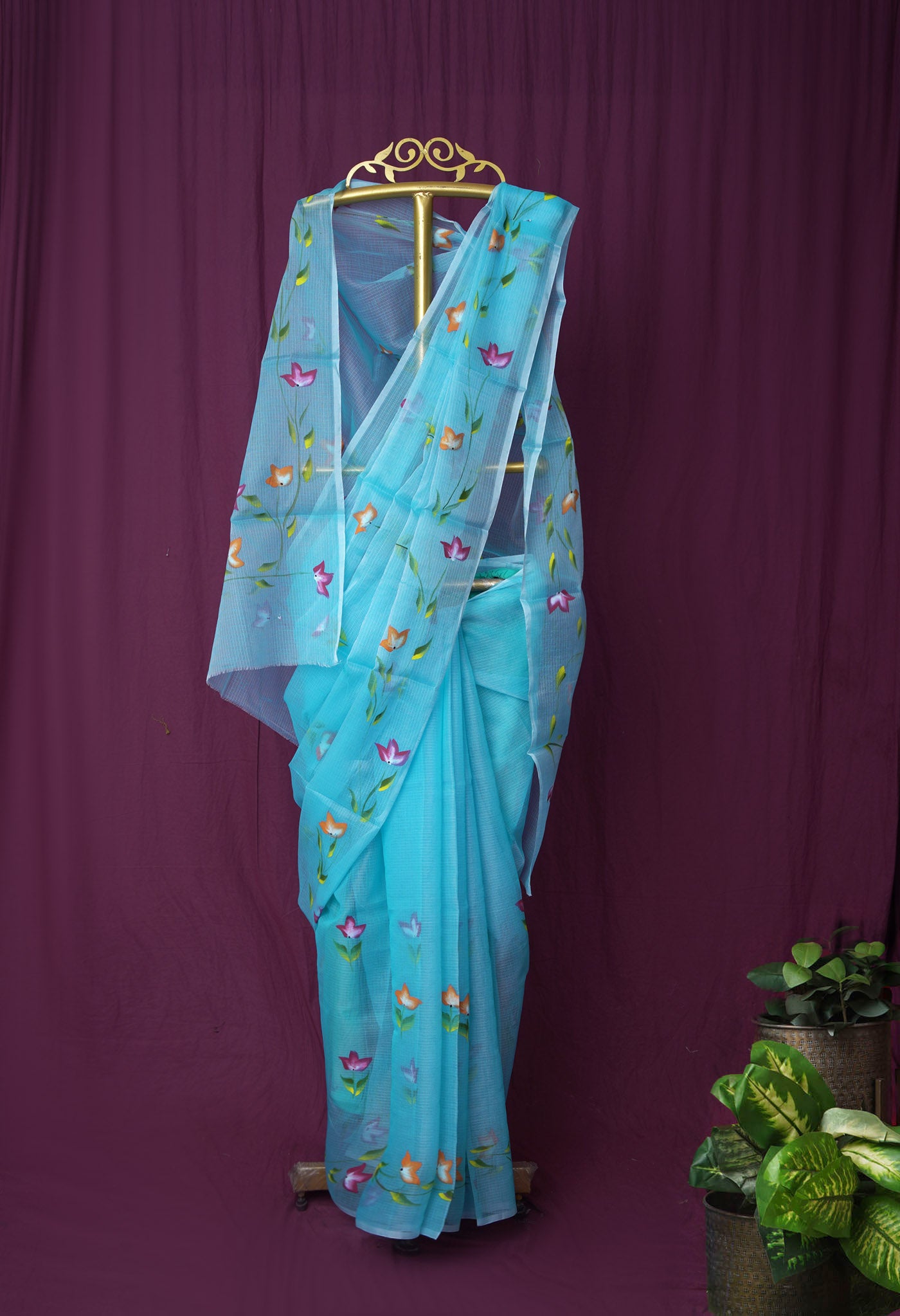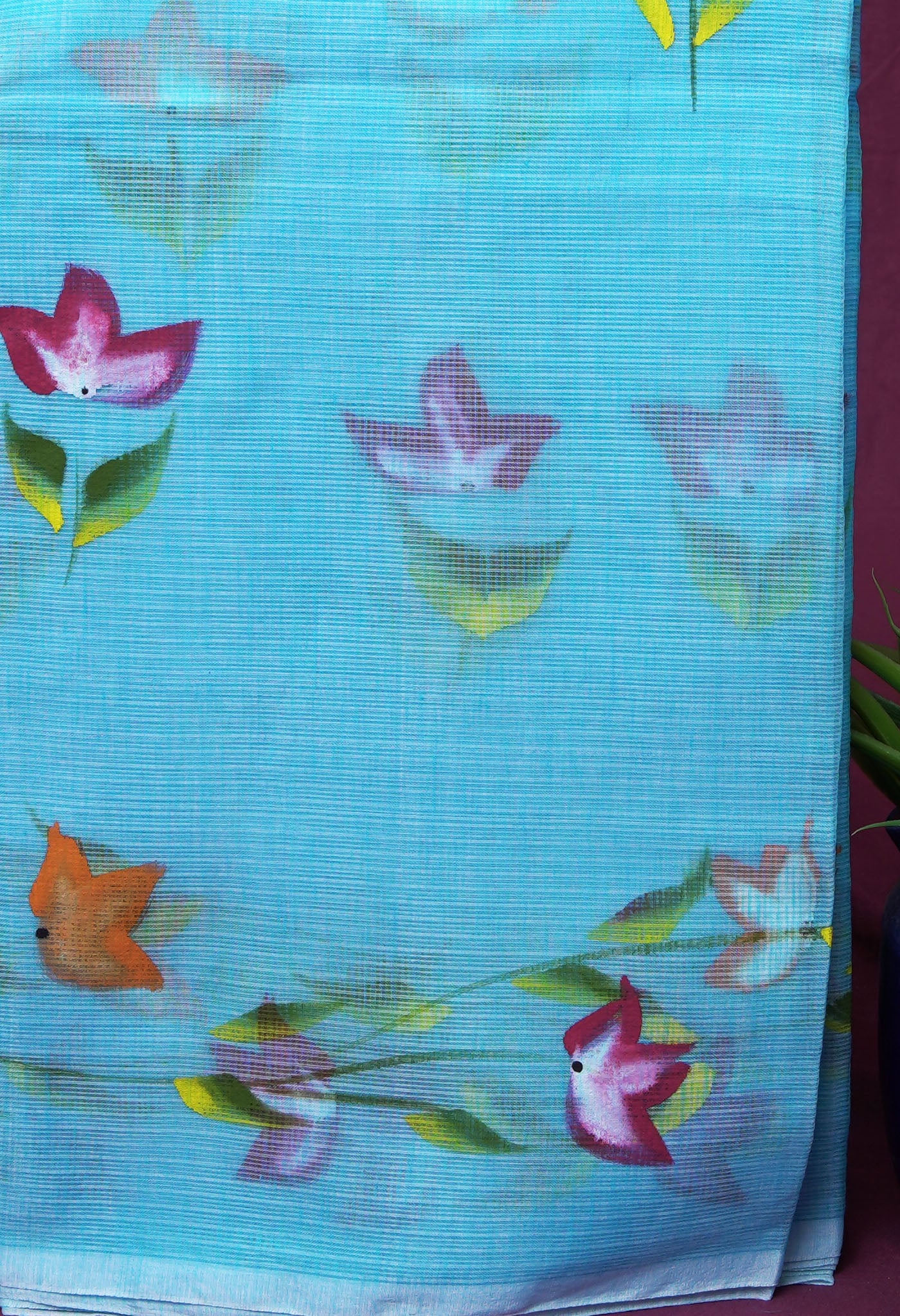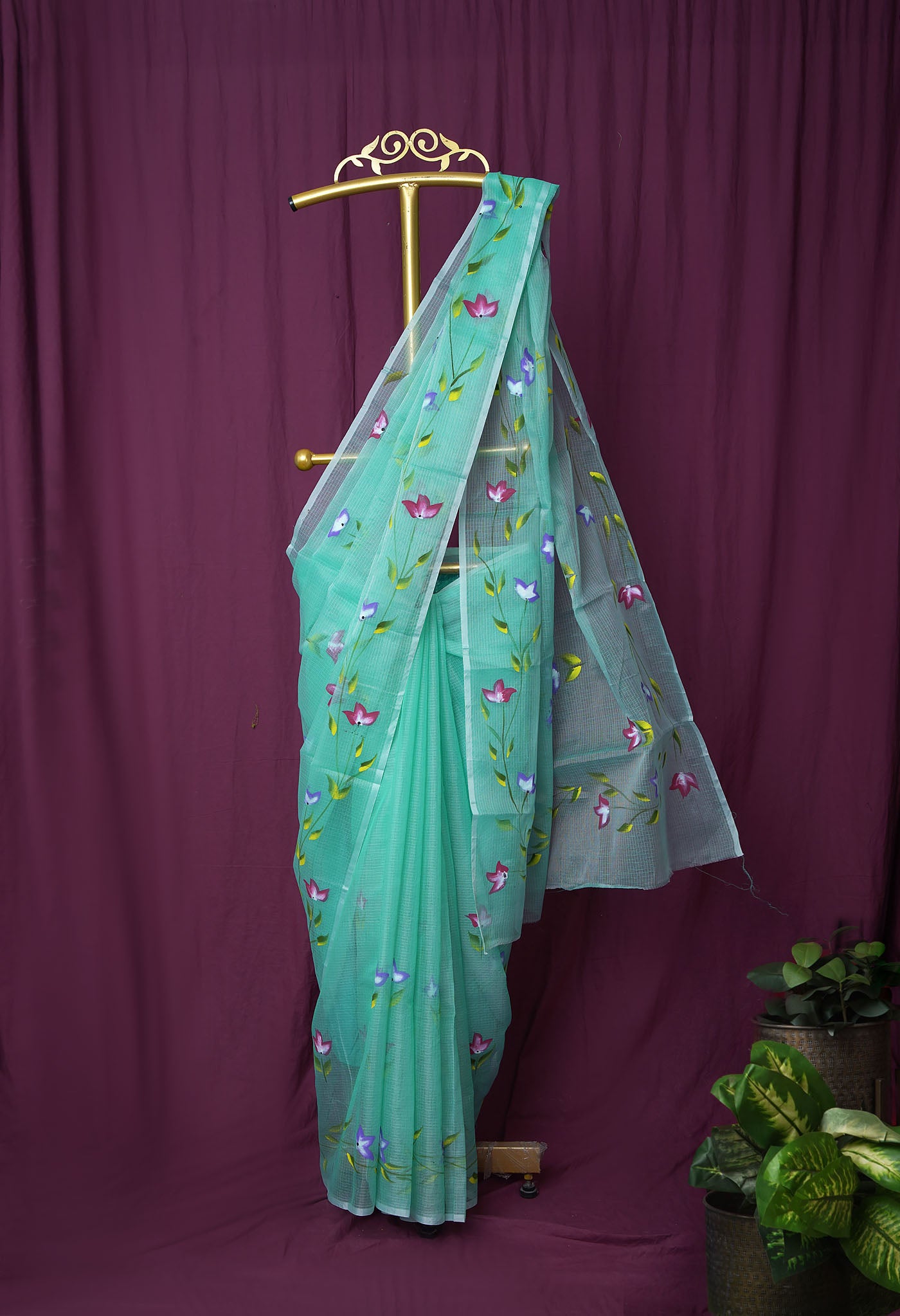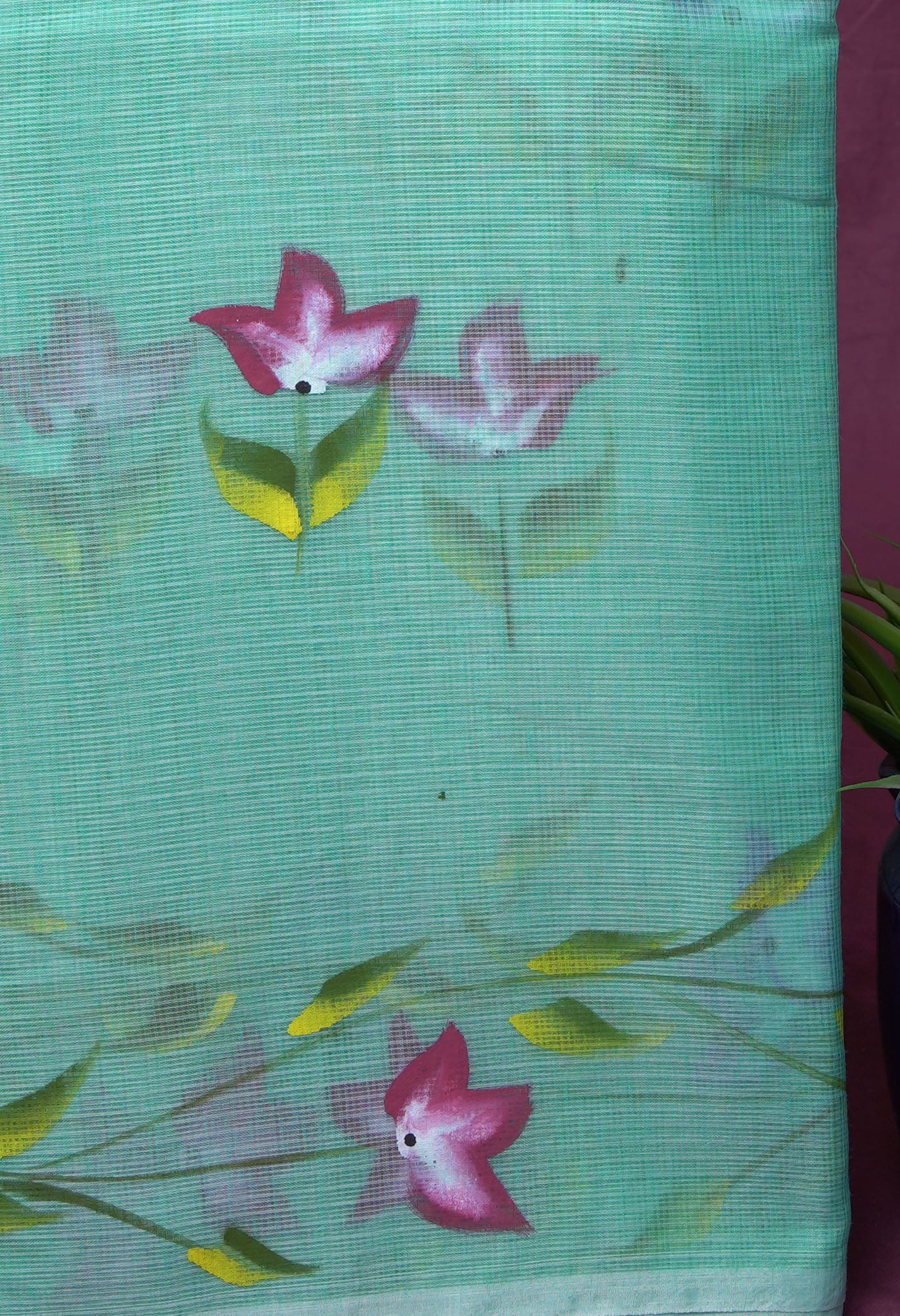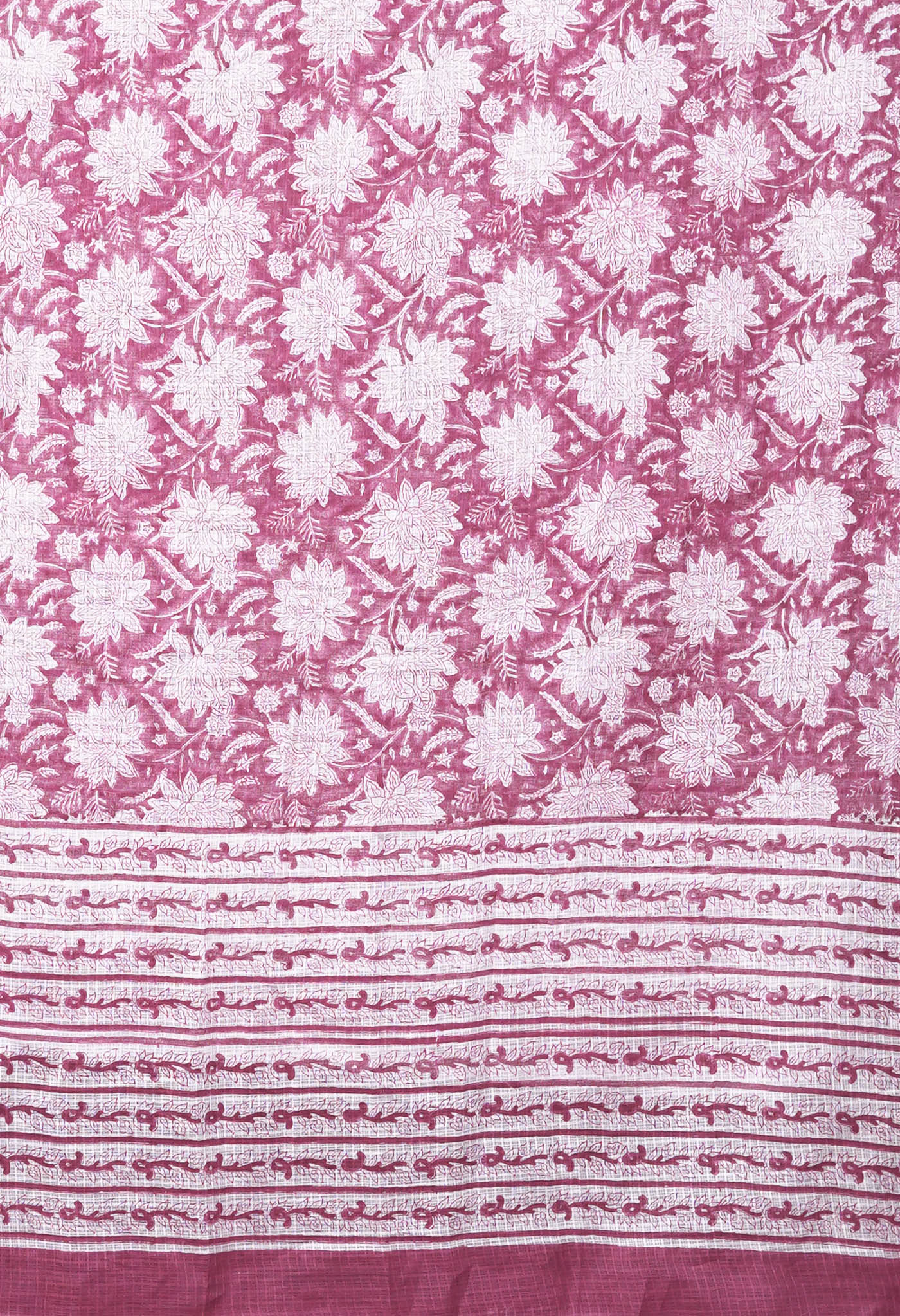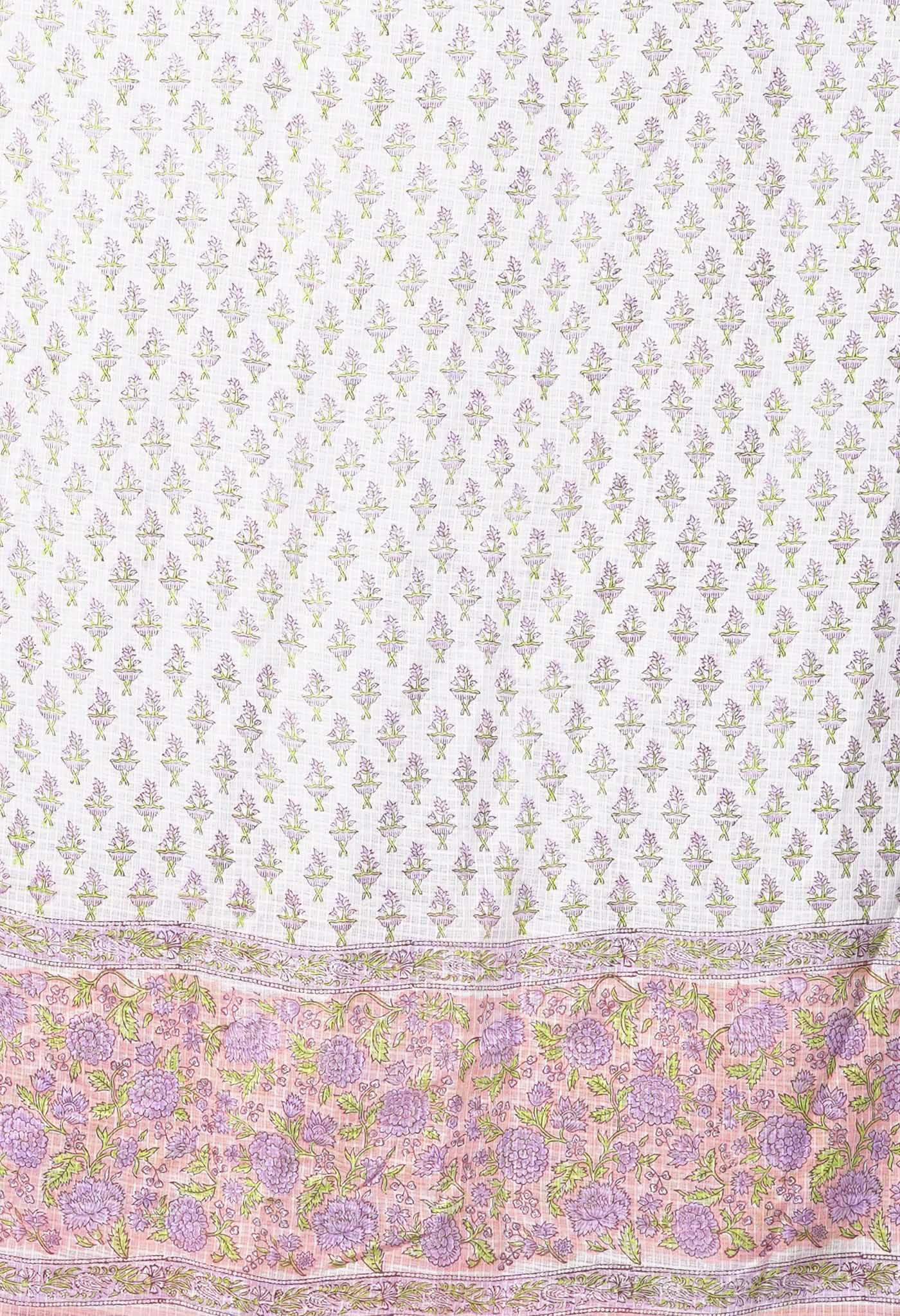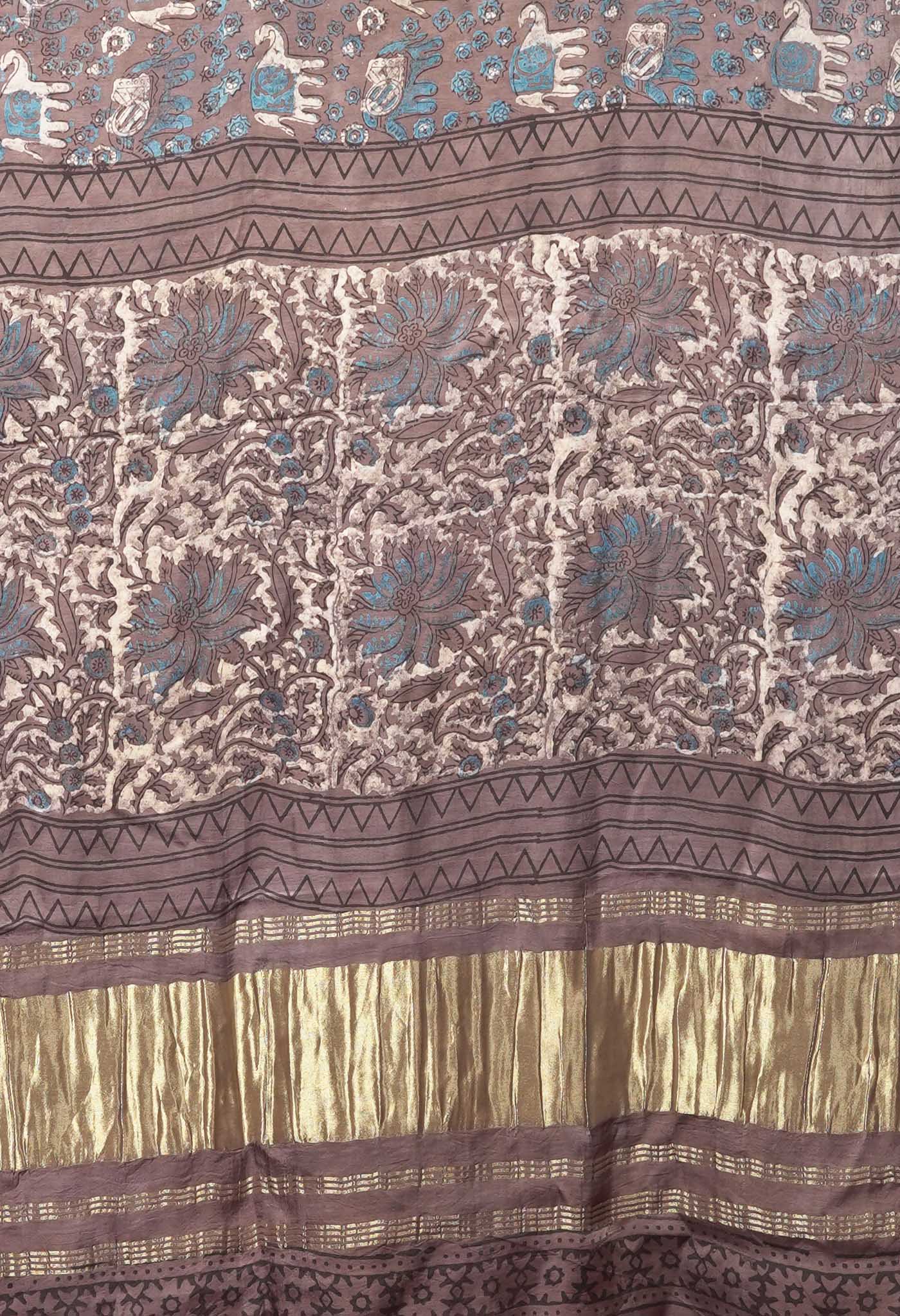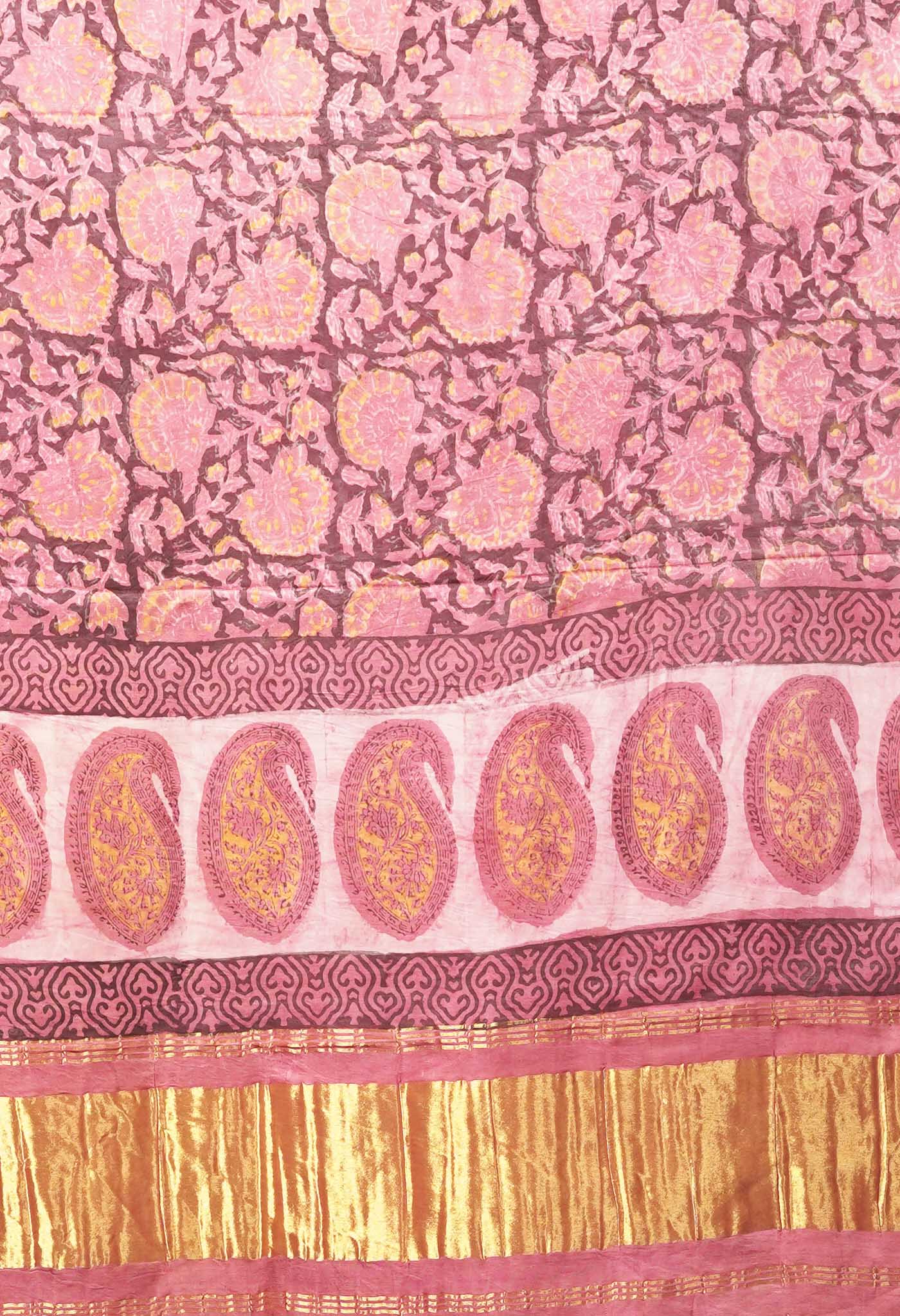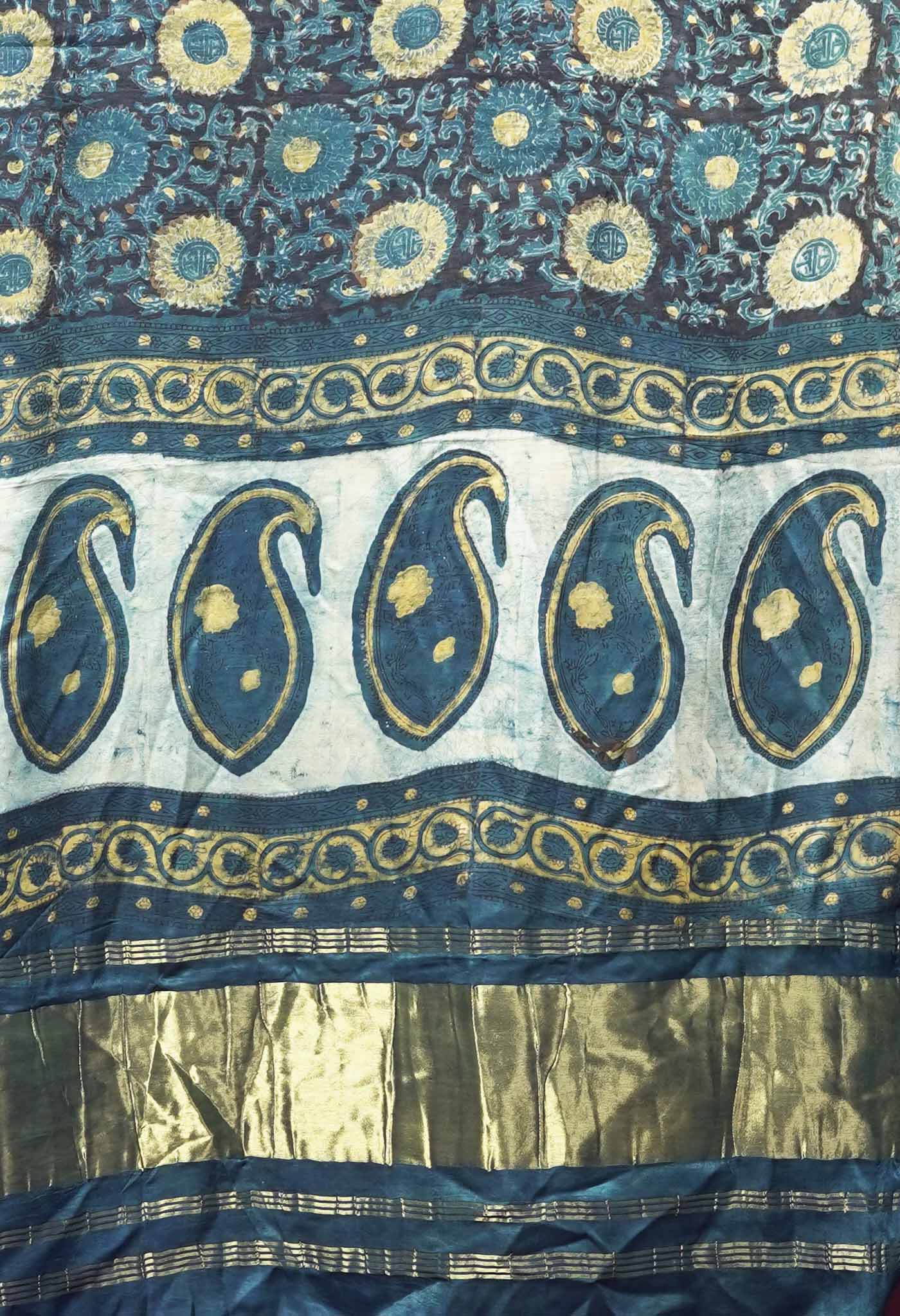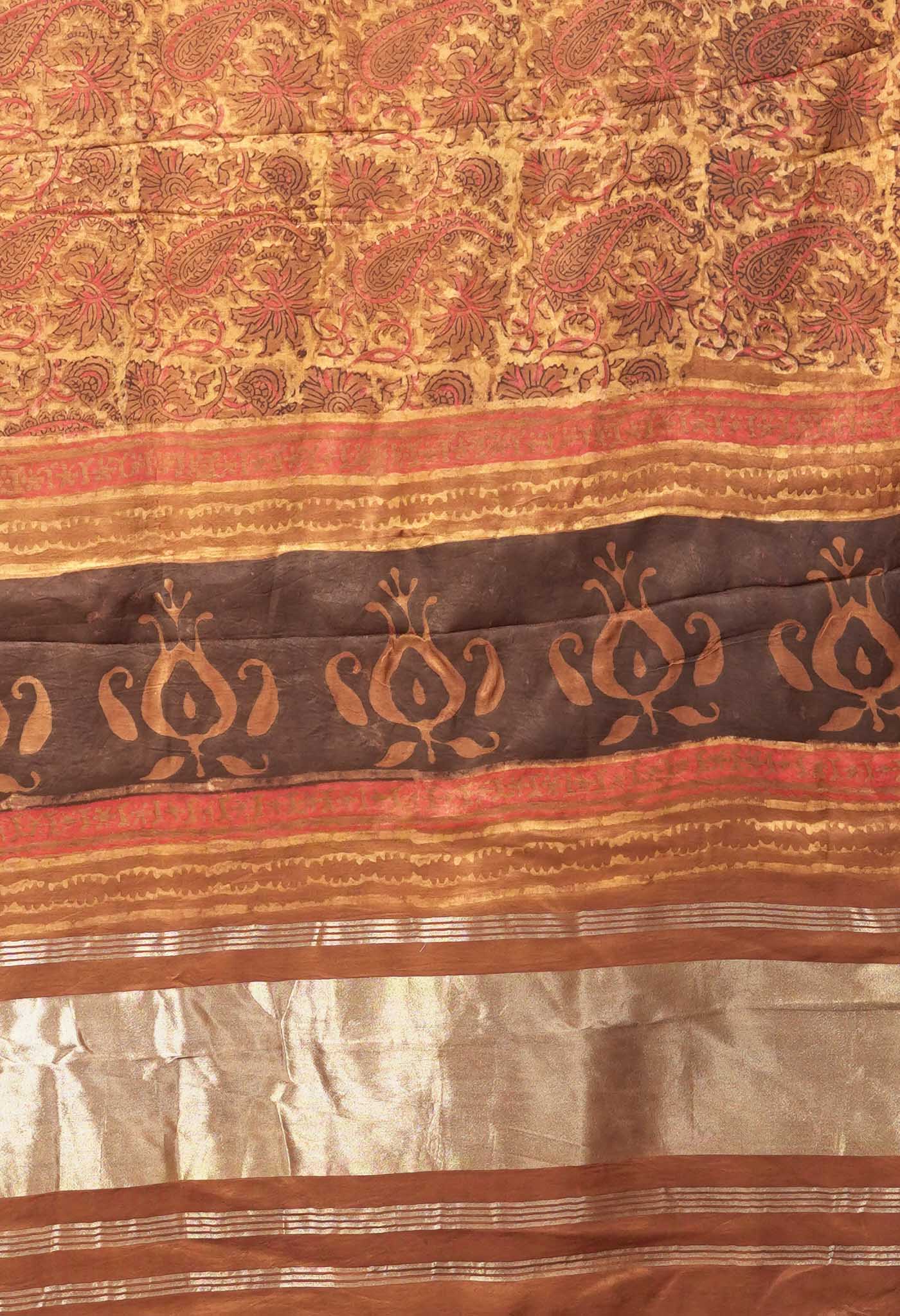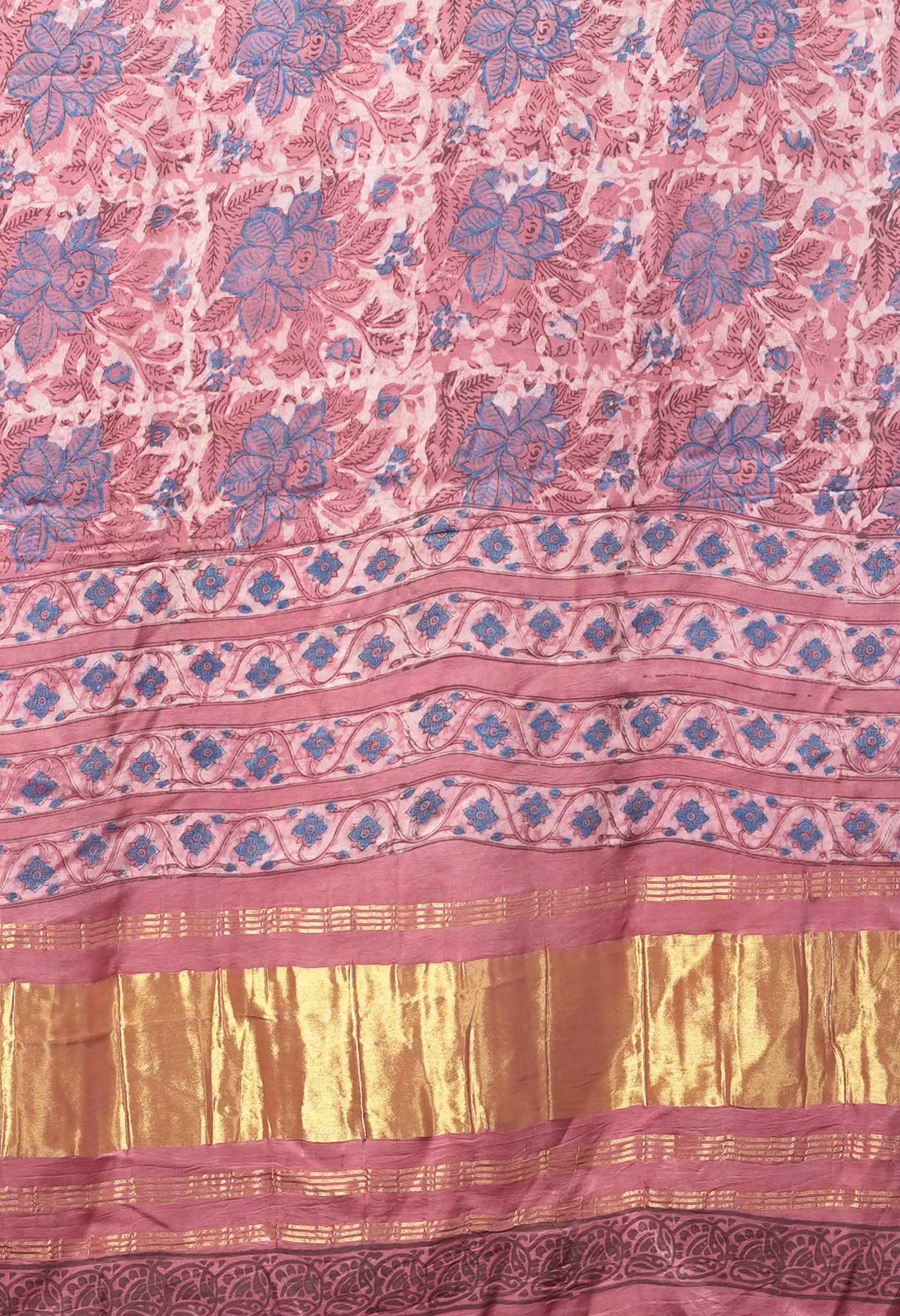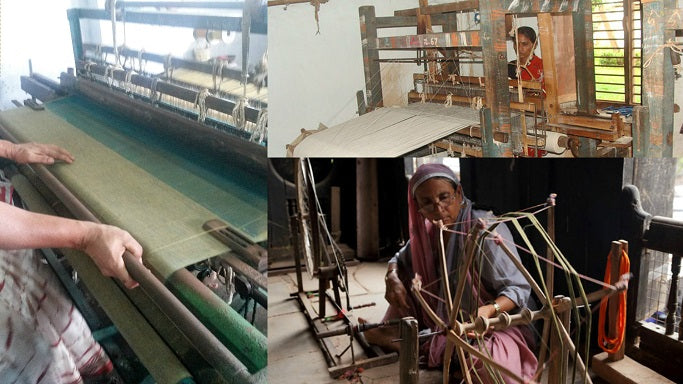
How healthy are Government Interventions in the Khadi Sector for the Industry?
For quite some time there has been a simmering discontent at the manner in which the Khadi sector has been controlled and run by the govt. that has been felt to be largely instrumental in creating inefficiencies in a sector that could otherwise be thriving and flourishing very much more.
In fact a deep study to unearth many of the reasons felt to be behind the sorry state of affairs of the stifled environment in which the sector operates, was undertaken by certain groups of individuals.
It is fast becoming a growing feeling that a sector that has tremendous potential is being prevented through archaic practices and vested interests of certain groups and individuals to come anywhere close to what could otherwise be.
The structure of the sector
The Khadi and the Village Industries Commission (KVIC) falls under the administrative control of the Ministry of Small and Medium Enterprises, which is the regulator cum protector of the production, sales, distribution, and marketing process of the sector.
The birth and role of KVIC
 The KVIC was formed in 1957 with the passing of a Parliamentary Act. It was instituted by Act number 61 of 1956 and amended by Act number 12 of 1987, under the administrative control of Ministry of Micro, Small and Medium Enterprises (MSME).
The KVIC was formed in 1957 with the passing of a Parliamentary Act. It was instituted by Act number 61 of 1956 and amended by Act number 12 of 1987, under the administrative control of Ministry of Micro, Small and Medium Enterprises (MSME).
It was established for the planning, promotion, organization and implementation of a programme for the development of Khadi and other village industries in the rural areas.
The objectives of KVIC
 KVIC has three broad objectives for promoting rural development. Namely,
KVIC has three broad objectives for promoting rural development. Namely,
- employment generation,
- saleable article creation,
- self-reliance
The government of India has spent huge sums of money for the promotion of Khadi program as plan and non- plan amounts. The Khadi institutions registered under KVIC are subsidized significantly through a scheme called the interest subsidy eligibility certification (ISEC) scheme introduced in 1977 at a subsidized interest rate of 4 per cent.
What is acutely felt
- In spite of the huge amount spent on the Khadi sector: in the form of grants, loans and subsidies by the government, the Khadi market still constitutes only 1 per cent of the Indian textile market.
- The government spending in the Khadi sector is supposed to benefit the rural economy through increasing the production and sales of Khadi and by creating more employment in the sector. However, this isn’t the case.
The cause for this malaise is attributed to the over-regulating the sector, by the Government of India, has resulted in creating inefficiencies in the sector.
Why is this felt?
- creation of significant number of entry barriers;
- restricting the availability of Khadi products only to stores run by KVIC;
- introduction of certification rules and pricing policies that are not driven by market principles;
- outdated marketing techniques such as heavily relying on print advertising alone,
have resulted in the decline in production and sales.
Over and above these are the facts that lend credence to the assumption
- The huge government spending in the sector, to the tune of 229.1 Crore, has been largely appropriated by the middleman rather than benefiting the producers of the fabric such as poor artisans employed in the Khadi sector.
- The prevailing low wages in the sector, created by the restrictive practices of the government, have resulted in making the sector less attractive to skilled artisans.
- In 2014, the word ‘KHADI’, trademarked in India, was appropriated by a German company. The Indian Government has raised this trademark infringement issue with the EU and has applied for a Khadi mark registration in these regions. This incident points to the lack of cognizance, especially on such basic fronts, taken by the government.
 Why Khadi was given importance by the Govt. from the start
Why Khadi was given importance by the Govt. from the start
- Clothing is one among the basic amenities required by the 1.2 billion strong, and growing, population of India. The Indian textile industry, which caters to this need, has an estimated market size of US$108 Billion.
- There are two broad segments within the industry. The traditional hand-woven and hand-spun textile segments and the modernized mill segment. Khadi is defined as any cloth woven on handlooms and hand-spun from cotton, woolen or silk yarns in India or the combination of two or all of these yarns, as per the Khadi and Village Industries Commission Act 1956.
- In the first and second industrial policies of 1948 and 1956 of independent India, Khadi and village industries were mentioned as important opportunities for providing rural employment. It was felt that this was a good way to provide non-farm employment opportunities to the poor artisans, who were otherwise unemployed and suffering from acute poverty, at very low per capita investment. The successive five-year plans have also designated the same role for Khadi.
- Apart from providing employment opportunities to agrarian labour, Khadi is considered a symbol of self-reliance by the Gandhian ideology. Especially in the post-independence period this gave the Swadeshi programme a definite and positive meaning.
- It is a product which is highly sustainable, eco-friendly and is an all-weather fabric which keeps the wearer warm in the winter and cool in the summer.
Govt. Spending
- The government spending on Khadi sector in the form of plan and non-plan amounts increased from 194.27 Crore and 43.7 Crore to 1,454 Crore and 229.1 Crore respectively in the period 1994-95 to 2014-2015, as shown by figure 1.
- The interest subsidies to Khadi institutions increased from 9.63 Crore to 31.45 Crore in this period.
- At the same time, production, sales, and employment declined from 9.19 crore, 11.58 Crore and 1.4 Crore to 19 Crore, 6.09 Crore, and 0.11 Crore respectively in the same period.
It is evident from these figures, that there has been a significant wastage of public funds in the Khadi sector, since there is a decline in production, sales and employment despite the increased spending year after year.
This inference is substantiated further by the Comptroller and Auditor General (CIG) of India Audit report (Report No 25 of 2014) on KVIC reveals that it is ineffective in utilizing the plan funds for the Khadi sector promotion, clearly indicating the wastage of public monies.
Stakeholders and Value Chain of Khadi Industry
The following flow chart explains the way the Khadi sector operates.

The manner in which funds are handled, certifications given
- With respect to the finances, at the nodal level, funds are allocated to the KVIC from MSME in the form of grants and loans. KVIC reallocates these funds to its different implementing agencies.
- Khadi institutions are NGOs that have been set up under KVIC or KVIBs, and report to them, which are certified by a Certification Committee appointed by KVIC.
The certification system of Khadi, which means issuing certificates or recognition letters to the stakeholders of Khadi, was established by Mahatma Gandhi under the All India Spinners Association. At present, Khadi certification rules are decided by KVIC as per section 15(2) (K) and (I) of Khadi and Village Industries Act, 1956 (61 of 1956) (read with Regulation 24(1) of the Khadi and Village Industries Commission Regulations, 1958).
The three aspects of certification are:
- safeguarding the purity and genuineness of Khadi,
- suitable wages to artisans, and
- assurance of fair price and quality to the customer.
If the Khadi institutions are not found abiding by the above-mentioned rules and, the certification of such institutions will be cancelled by the KVIC as instructed by the Government.
KVIC is, thus, the regulator cum protector of Khadi sector in India. The certification rules, though, are not based on current market realities but based on those formulated during the period of Mahatma Gandhi.
The Chain
- Artisans (spinners, weavers, and other artisans) mostly women (65 per cent) are contracted by the institutions for different stages of production for Khadi.
- The production process of Khadi starts with the production of cotton bale in the farm by
- It is sent to the six sliver plants of KVIC and Khadi institutions.
- Cotton tapes are made using cotton bale in these sliver plants. From the cotton tapes, sliver, which is a textile fibre strand that is loose, soft and un-twisted is made by carding machine. It is sent to Khadi institutions.
- Spinners convert the silver traded to them by Khadi institutions, to yarn on hand-powered spinning equipment called charkas.
- Among the total yarn produced, majority (79 per cent) is cotton, with the wool and silk constituting 19 per cent and 1 per cent only, according to the KVIC reports.
- Yarn is brought back from spinners by Khadi institutions after paying charges for
- Weavers weave fabric on handlooms with the yarn traded to them by Khadi institutions on payment of conversion charges.
- The foundation process of the value chain is spinning, upon which all the other value addition processes depend. Spinners are thus considered the backbone of Khadi industry.
- The other workers are permanent staff members employed by either KVIC or KVIB.
- Sale of Khadi fabrics/garments is done through KVIC run Gramodyog Bhavans or retail outlets of Khadi institutions certified by KVIC.
Production of Khadi – the restricted environment
According to regulations laid out by the Micro, Small, and Medium Enterprises (MSME), only KVIC and KVIC-certified institutions namely some NGOs are allowed to produce Khadi.
- The MSME notified the Khadi Mark Regulations 2013 in the Gazette of India on 22 July 2013 to ensure the genuineness of Khadi produced in India.
- The Khadi Mark was launched on September 30, 2013, and was aimed at providing the required identity to Khadi as a symbol of purity, genuine, self-reliance and non-violence for boosting its sale.
- No textile can be sold or otherwise traded by any person or institution as Khadi or Khadi product in any form or manner if the Khadi mark tag is missing.
Facts that point towards mis-utilization of funds
- Field visits showed that many weaving units, however, emerged only for getting KVIC rebates and other benefits but have not produced any Khadi product.
- It is also supported by the CAG Report (Number 4 published in 2001) which shows the mis-utilization of funds by KVIC for helping fraudulent units. Moreover, no choices are available in the market for producing Khadi other than through the approval of KVIC.
Sales and Marketing of Khadi
- KVIC undertakes sales activities through its twelve departmentally-run Khadi Gramodyug Bhavan and around 7050 institutional sales outlets certified by KVIC located in different parts of the country.
- In the Khadi Gramodyog Bhavans and the other stores certified by KVIC, discounts on Khadi apparel fixed by the Ministry of Small and Medium Enterprises, Government of India, can be availed.
- Discounts decided by the MSME are aimed at making the Khadi products available at cheaper prices in the Khadi Gramodyog Bhavans and the other stores certified by KVIC. According to the officials, this is to ensure more saleable products through making the Khadi and Khadi product prices competitive with other textiles.
- There are many schemes such as a rebate scheme, continued by the Government through the Khadi and Village Industries Commission (KVIC), on sale of Khadi and Khadi products till 2009-10 and replaced by Market Development assistance for the sales enhancement of Khadi.
- Large sums from 2.1 crore to Rs. 81.22 crore is spent for the rebate scheme in the period 1957 to 2010 and Rs.119.53 crore to Rs. 177.29 crore in the period 2011-12 to 2013-14, respectively.
- In spite of the discounts availed at KVIC stores and the significant amount spent by KVIC for the schemes like rebate scheme and MDA for the sales enhancement of Khadi, the Khadi sales show a declining trend in India.
- Figure 1 shows a significant decline in Khadi sales in the 1990s with a negative growth rate of 2.4 per cent. This, however, does not include the sale of Khadi through private outlets like Fab India and Raymonds shops, for which time series data is not available.
- Khadi fabrics are largely restricted to being sold in KVIC-certified stores only due to the protective practices adopted by the government through KVIC. This has restricted the availability of Khadi products to the consumers.
- Based on a policy decision of KVIC, private parties are allowed to sell Khadi through a franchisee model while the approval of KVIC is required for using the Khadi logo and also with no rebate for the franchisee.
- For example, recently initiatives like tie ups with Fabindia and Raymonds for the Khadi sales by KVIC have been introduced for Khadi sales, while using Khadi logo, again, require the approval of KVIC. Both of them have applied recently for the Khadi mark for selling readymade garments and fabrics under the Khadi brand.
- In addition to this, the working times followed by the Khadi retail outlets are the same as government office timings in India, from 10:00 am to 5:00 pm. This has created inconvenience to the employed customers and those who come from distant places for purchasing Khadi products. This is revealed from our field visits and shown by other studies.
- The marketing of Khadi is mainly done by Khadi institutions. Government intervention in the Khadi marketing has resulted in the reliance on outdated techniques namely print advertisements or banners and rebate schemes for the marketing of Khadi products. The lack of appropriate marketing strategies has resulted in the failure for mass consumer attraction towards Khadi fabrics.
- In interviews with the KVIC officials, it was revealed that regular mill clothes similar to Khadi, fakes, are being sold through unauthorized stores. Like them, there are several other studies that also claim that fake products are being sold as Khadi through unauthorized stores.
- This shows, that while there is a demand for Khadi, it is unwittingly being met by spurious products, and the sale of spurious products is taking place because of the Government’s restrictive practices. This is also leading to a decline in official sales.
Cost of production
- The outputs of Khadi institutions were required by KVIC to be delivered through the vehicle called cost chart until 2011, where the pricing of Khadi products were based on the cost of these products.
- Based on Circular No: RID/KRDP/ MVofMDA(PI)/2010-11 of KVIC dated 28/04/2011, the Khadi institutions are granted complete flexibility in the Khadi and its products pricing through the introduction of market linked pricing. This circular allows the Khadi institutions to sell the Khadi products at prices based on the acceptability of the products in the market and their demand rather than the product cost.
- It demands the Khadi institutions to use the surplus created from the market-linked prices for the artisans wage enhancement and for undertaking reforms in production and marketing. This is called benefit chart of pricing. In spite of this, the Khadi institutions continue to follow the old cost chart pricing and not the market-linked pricing, as shown by our field visits.
Table 1 shows the example of 2015 cost chart for Khadi institutions in Kerala. It shows that for Khadi cloth worth Rs. 100, 75 per cent of price is determined by the prime cost, which includes raw material costs and wage costs. Among the prime costs, major share is for raw material costs (36 per cent), followed by wage costs (37 per cent).
Table 1: Share of inputs, wages and margins in the 2015 cost chart of Khadi Institutions in Kerala
| Components | Share (%) |
| Raw Material | 36.02 |
| Pre-processing Wages | 7.7 |
| Spinning Wages | 11.280 |
| Spinning Artisan Welfare Fund @ 10% | 1.328 |
| Spinning Artisan Incentive @10% | 1.328 |
| Weaving Wages | 11.33 |
| Weaving Artisan Welfare Fund | 2.28 |
| Weaving Artisan Incentive @10% | 1.90 |
| Prime Cost | 75.166 |
| Trade Margin @3% | 2.25 |
| Insurance | 0.75 |
| Bank Interest @5.5% | 3.00 |
| Establishment Margin@20% | 18.80 |
| Unit Retail Price | 100.00 |
Source: KVIC State Office 2015
- The development of cost chart for the certification of Khadi was done by Mahatma Gandhi based on the prevailing market conditions of that time. These rates are obviously not in keeping with present market conditions, as shown by the high share for establishment expenditure, no share for publicity and the low wage costs for weavers compared to those in the handloom industry.
- The costs of the products mainly the raw material costs are translated into the prices of the Khadi products, according to the cost chart. By implementing benefit chart, the costs involved in producing the Khadi products will have no role in the pricing, while pricing will be based on the market demand and acceptability of the product.
Employment in Khadi sector
- Figure 3 shows a significant decline in the employment generated by the Khadi sector in the period 1960 to 2014-15 with a significant negative growth rate of 5.2 per cent.
- The primary objective of KVIC, which is employment generation in the rural economy, through the promotion of Khadi has not been achieved in India.
- The audit reports by CAG of India also showed the lack of credibility in the claims made by KVIC on employment generation (Report Number 4 of 2001).
- This again shows the government spending for the benefits of rural economy being mis-utilized or done away with by the government machinery.
Figure 3: Employment in Khadi Sector
Spinners constitute the majority of the Khadi sector’s workforce, followed by weavers, as shown in figure 4. The ‘others’ category which includes the salaried staff and the pre- processing workers, constitute only a very limited share of the workforce.
 Note: Others include salaried staff and the pre-processing workers where salaried staff constitutes the majority
Note: Others include salaried staff and the pre-processing workers where salaried staff constitutes the majority
Economic Empowerment of the Poor Artisans in Khadi sector
The Khadi artisans contracted by the Khadi institutions are piece rate workers who get the pay rate for the amount of output made decided by the Khadi institutions separately, based on the minimum wage rate fixed by KVIC over different time periods.
In addition to the wages, the MSME has implemented different measures for the economic empowerment of the poor artisans through KVIC like Market Development Assistance Schemes.
There is assistance provided at 20 per cent of the production value under this scheme to the Khadi institutions among which there is mandatory allocation of 25 per cent to artisans as incentives along with the wages.
There is also a mandatory requirement by KVIC for the State KVIBs and the Khadi institutions to contribute 12 per cent of the artisan’s wages to the Artisan Welfare funds.
Based on the number DKC/MDA Policy/2013-14, there is a mandatory requirement by the Khadi Coordination Director, MSME, Government of India for wages distribution to the Khadi artisans only through banks or post offices and not through cash.
Figure 5 shows a huge gap between the per capita earnings of the weavers and spinners and the salaried staff of the KVIC. The per capita earnings for spinners and weavers are very low compared to the others category.
Figure 5: Per capita Earnings (Earnings/Number of Employed Persons)
-
 As per information, the spinners and weavers, get a guaranteed minimum wage of 125 and Rs. 100 only respectively every day in hand as cash. They get the other allowances as lump sum amounts once in a year or so, while there is no certainty on when they are getting these other allowances.
As per information, the spinners and weavers, get a guaranteed minimum wage of 125 and Rs. 100 only respectively every day in hand as cash. They get the other allowances as lump sum amounts once in a year or so, while there is no certainty on when they are getting these other allowances. - The reason is that in majority of the institutions, the wages are given as cash and have no arrangements for the provision of wages through banks or post offices. This is in spite of the mandatory requirement from MSME to give the artisans' wages only through banks or post offices.
- KVIC is supposed to cancel the certification to all such institutions which do not follow these requirements, which, they have not done. This shows the inefficiencies associated with the systems and procedures of KVIC.
- The Khadi spinners find it extremely difficult with 125 that they get in hand for meeting their day to day expenses, as pointed out by the spinners in our interviews with them. Their earnings is very much lower than the average daily earnings of women workers (Rs. 336 per day) in other similar sectors like match industry.
- For Khadi cloth worth 100, 38.75 per cent goes to the wages for the poor artisans, as shown by the Khadi cost chart 2015 of Kerala. It, however, is split into spinning and weaving wages.
- Considering the spinning and weaving wages separately, spinning and weaving are only 15 per cent each of the total cost. At the same time, the private wage standards of weavers who work for the textile entrepreneurs in the handloom industry in many states as shown by studies are 25 per cent.
- It is thus clearly evident that the huge amount spent for the economic empowerment of the poor artisans is not reaching the artisans.
- In addition to the work to be done in the work sheds, they have to take the cotton and yarn to their homes and to continue the work at home for achieving their targets most days, as reported by the weavers and spinners during the field visits.
- The physical labour or man hours involved is also reported very high. In spite of these, they get only very little wages for maintaining their livelihood. During our field visits, the spinners and weavers reported that many skilled artisans left the field and joined the textile shops nearby as piece workers, where they get more wages. Due to these, there is unavailability of the spinners and weavers willing to work in this sector now.
- The young generation, who are more educated is not willing to work in this sector due to the low wages and the hardships involved; while those who remain in this sector are mostly the old workers who do not have any other choice for their livelihood. The availability of trained artisans to work in Khadi sector has declined in all states, due to the low wages, as reported in studies.
Conclusion
- Khadi industry has become ineffective and inefficient, besides failing to deliver economic empowerment to the poor artisans working in the sector. There are significant inefficiencies associated with the systems and procedures of KVIC, resulting in the failure to achieve its objectives of rural employment opportunities generation as well as the creation of saleable articles.
- The Government plays a paternalistic role in the Khadi sector restricting the choices for production, sales, distribution and marketing as well as imposing the rules and regulations in the sector. This has resulted in restricting the growth of Khadi market in India.
Positive course of action suggested
- Entry barriers in the sector need to be removed and the fabric is made available to private retail stores, thereby the public is given a wider number of choices to opt for. It is important to add here, that the opening up of Khadi retailing to private players such as Raymond and Fabindia are good initiatives in this regard.
- This has generated high demand for Khadi products among the customers which goes to prove that the khadi fabric has many takers. However, at present, both require the prior permission of KVIC to retail khadi. This is counterproductive and should be done away with: everyone should be freely able to access and sell khadi in the markets.
- Here, the spinners and weavers should be allowed to work with private textile designers without the approval of KVIC. This will free up the labour market and will prevent leakages to middle men.
- The increase in the number of purveyors of Khadi will also prevent price monopolization, and will increase the supply available.
- This will also prevent piracy problems associated with the Khadi industry such as the production of fake products bein


